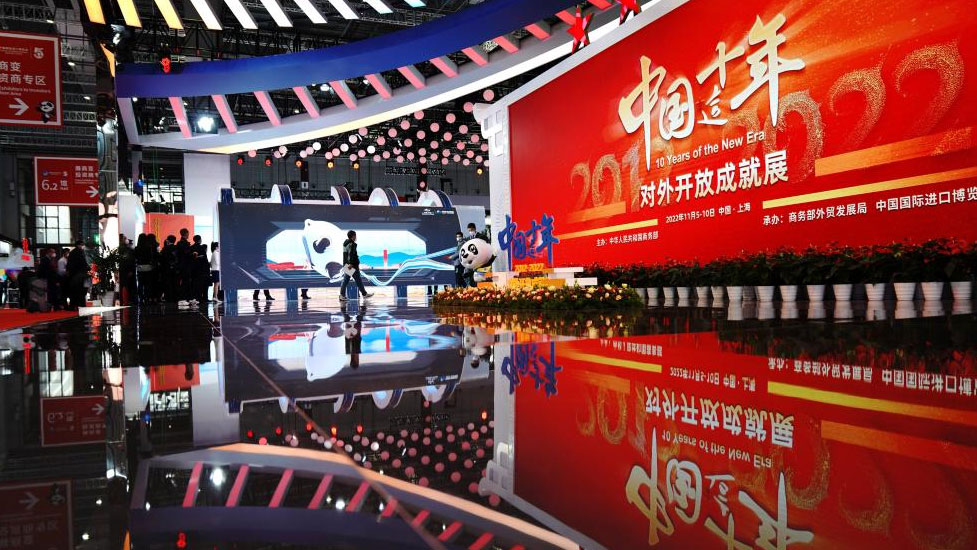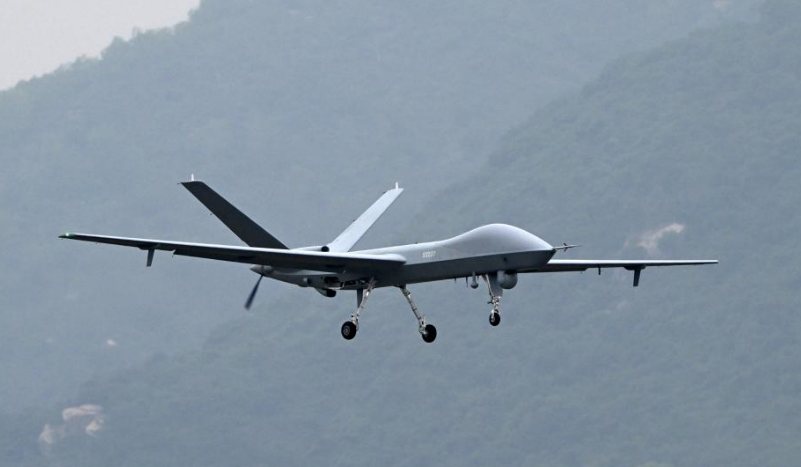Foreign trade growth expected to be stable
Trade: Manufacturing sector has bolstered strength
The growth of China's foreign trade is expected to be stable this year, given the robust performance during the January-October period, which has laid a solid foundation, trade watchers said on Monday.
The country's foreign trade surged 9.5 percent year-on-year to 34.62 trillion yuan ($4.79 trillion) in the first 10 months of 2022, while its trade surplus jumped 46.7 percent year-on-year to 4.8 trillion yuan, according to the General Administration of Customs.
Judging from the sector's performance so far this year, and given the resilience of the country's industrial and supply chains, China is likely to see stable growth of foreign trade and a high trade surplus this year, said Wei Jianguo, vice-chairman of Beijing-based China Center for International Economic Exchanges.
"Despite the Russia-Ukraine conflict and the United States' interest rate hike, Chinese exporters, backed by the government's supportive measures and new foreign trade formats such as cross-border e-commerce business, have been busy in upgrading their product structure this year," he said, adding the country's export impetus is no longer dominated by products with low industrial added value.
Li Kuiwen, director-general of the GAC statistics and analysis department, also held that opinion and said that China's exports of electric vehicles doubled on a yearly basis from January to October, while the exports of mechanical and electrical products such as lithium batteries and solar cells soared by about 80 percent year-on-year.
China's high-tech exports rose from $474.35 billion in 2010 to $942.31 billion in 2021, up by 98.65 percent, according to the World Bank database.
This indicates China's manufacturing sector has not only withstood the test of the market amid global supply chain disruptions, but also continuously bolstered its strength driven by the market forces.
Meanwhile, the foreign trade value of private companies accounted for more than half the total, and their growth rate was 4.9 percentage points higher than the overall export and import growth rate over the past 10 months, showing the resilience and competitiveness of the private companies, Li said.
With the growth of China's foreign trade dropping from 8.3 percent in September to 6.9 percent in October, experts said that external factors such as softening global consumption demand and high inflation will continue to pose challenges to companies at home in the fourth quarter and next year.
Meanwhile, the high export base last year is also a factor for the slowing growth rate this year, experts said.
China's exports had been weighed down by a sluggish Christmas shopping season, high inflation and high interest rates, as well as an uncertain economic outlook in overseas markets. These factors have severely dampened consumer confidence in many parts of the world.
Zhou Maohua, an analyst at China Everbright Bank, said as the prices of energy and raw materials are high, companies are holding off on replenishing inventory, so imports continued to be depressed last month.
Photos
Related Stories
- China sees steady foreign trade growth in first 10 months
- China's foreign trade of goods up 9.5 pct in Jan.-Oct.
- Chinese ports' container throughput maintains expansion in Jan.-Sept.
- China's current account surplus up 56 pct in first 3 quarters
- Yunnan sees foreign trade rise 16.4 pct in Jan.-Sept.
- North China's Hebei sees rising foreign trade in first nine months
- China's Anhui sees growing foreign trade in Jan.-Sept.
- Shanghai's Hongqiao Central Business District sees prosperous development of foreign trade
Copyright © 2022 People's Daily Online. All Rights Reserved.









